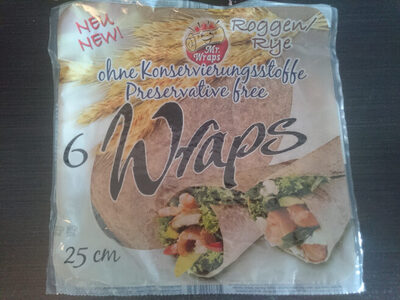Ruistortilla - Mr. Wraps - 370g
This product page is not complete. You can help to complete it by editing it and adding more data from the photos we have, or by taking more photos using the app for Android or iPhone/iPad. Thank you!
×
Barcode: 5708209203431 (EAN / EAN-13)
Quantity: 370g
Brands: Mr. Wraps
Labels, certifications, awards: No preservatives, New
Manufacturing or processing places: Denmark
Stores: Prisma
Countries where sold: Finland
Matching with your preferences
Environment
Packaging
Transportation
Threatened species
Report a problem
Data sources
Product added on by kapy
Last edit of product page on by ruanmi.
Product page also edited by hungergames, jumati, openfoodfacts-contributors.
If the data is incomplete or incorrect, you can complete or correct it by editing this page.






